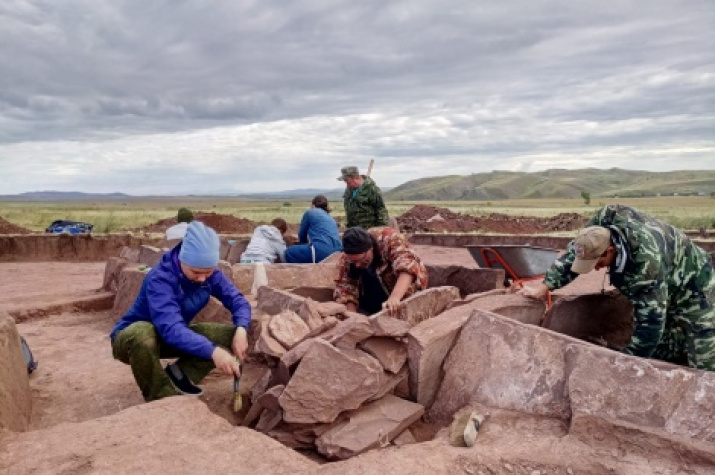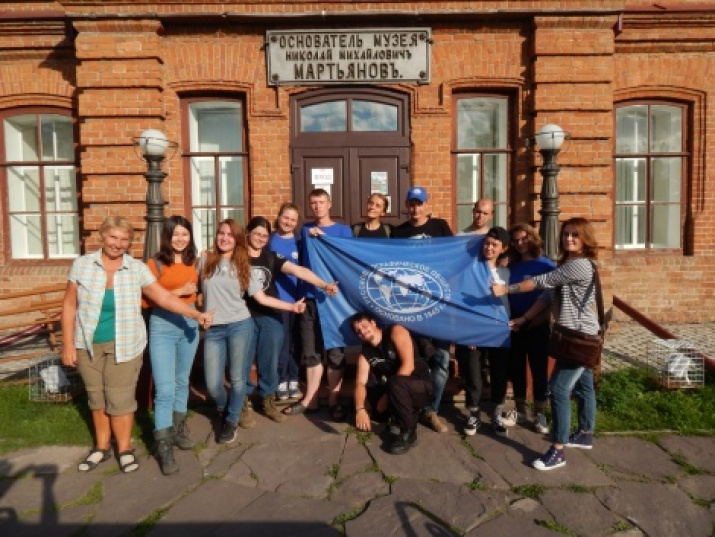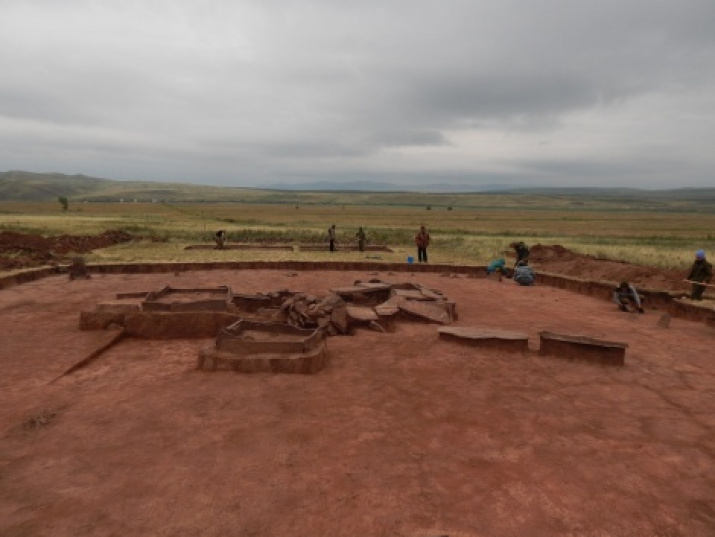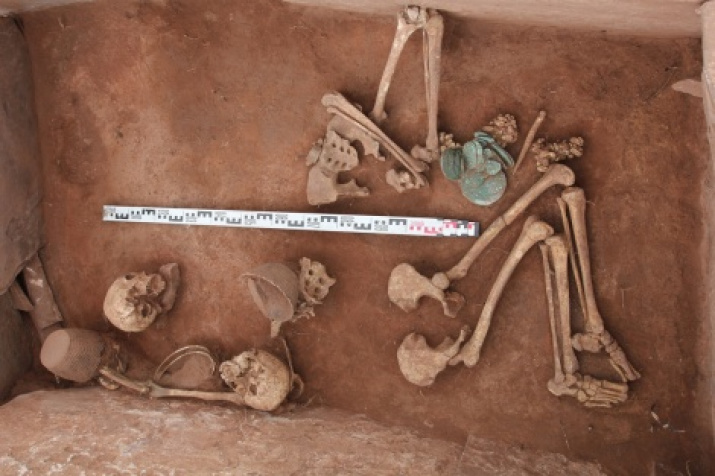The expedition “Secrets of Ancient Artists of Siberia” has completed its work in the Republic of Khakassia. The expedition was organized by the Russian Geographical Society and the Institute of History of Material Culture of the Russian Academy of Sciences. Young men and girls from different regions of Russia participated in it.
For the whole month, the expedition team was engaged in researching archaeological sites of the Okunev culture, in particular of the mound the Red stone II. During the excavations they found pots with ornaments, beads, and maral and sable teeth. The most important and unique finding was the burial with elements of a ritual costume.
The Okunev archaeological culture of Southern Siberia (XXV–XVIII centuries BC – the Early Bronze) was defined as an independent one in the 70s of the last century. Manifestations of its heritage are very diverse: expressive paintings on rocks, special stelas, probably depicting deities, and numerous small plastic items, often found in burials.
"During the excavations, we learned how to perform different types of works: cleaning layers of earth, sweeping, processing of finds, cleaning of burials and more. I was lucky enough to participate in the clearing of bronze medals and disk - elements of a breastplate of a ritual costume. Such a discovery was made for the first time during the excavations of the mounds of this culture," said expedition member Oksana Zhirova.
In the ground there were found many bronze oval medals. Each of them had holes at the edges and traces of poorly preserved laces. Apparently, they were parts of a single object of ritual purpose. Its central part was occupied by a large round bronze disk, and the rest of the medals served as a frame. This breastplate could have been an element of a ritual costume. The costume was folded into a special bag, which was placed, according to the ritual practice, on the feet of the buried.
In addition to the major program, the expedition members visited the most famous and historically significant places in the region, i.e. the city of Abakan, the Salbyk mound, the Dvuglazka grotto, the Sayano-Shushenskaya hydroelectric power station and Shushenskoe Museum-Reserve.




